Share
Working at ESO
Are you interested in working in areas of frontline technology and in a stimulating international environment? Do you feel your profile matches our requirements? Learn more about our current vacancies and apply online. Read more..
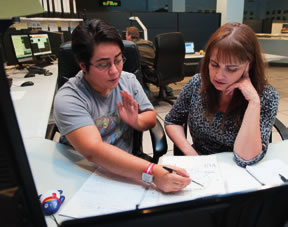
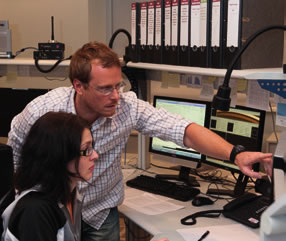

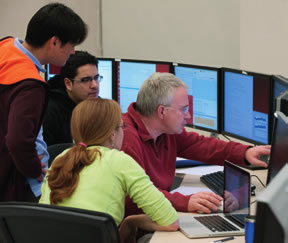
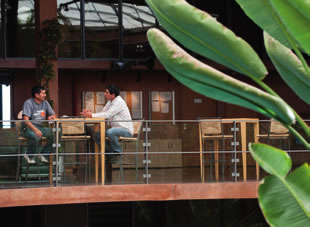
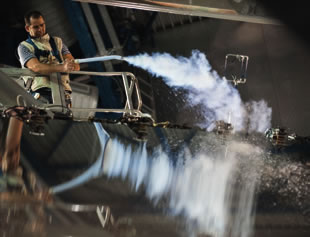
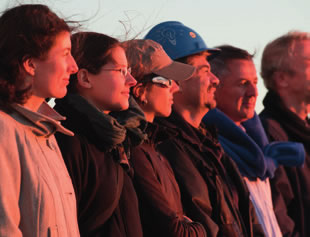
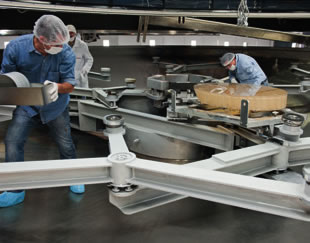
The European Organisation for Astronomical Research in the Southern Hemisphere (ESO) is the foremost intergovernmental astronomy organisation in Europe and the world's most productive ground-based astronomical observatory. ESO carries out an ambitious programme focused on the design, construction and operation of powerful ground-based observing facilities enabling astronomers to make important scientific discoveries. ESO operates three unique world-class observing sites in the Atacama Desert region of Chile: La Silla, Paranal and Chajnator. The ESO headquarters are located in Garching, near Munich, Germany.
At Paranal, ESO operates the Very Large Telescope, the world's most advanced visible-light astronomical observatory. ESO is a major partner in ALMA, the largest astronomical project in existence. And on Cerro Armazones, ESO is building the 39-metre European Extremely Large Telescope, which will become "the world's biggest eye on the sky" and whose operations will be fully integrated into the Paranal Observatory.
For its Maintenance, Support and Engineering (MSE) Department at the Paranal Observatory, ESO is inviting students from European and Chilean Universities in their career's last period, to participate in the following programme:
Winter Internship 2018
Paranal
Deadline 31/05/2018
The MSE Department of the Paranal Observatory provides technical support to the four VLT 8-m telescopes, to the VLT Interferometer with its auxiliary telescopes and to all instruments available for scientific observations. The telescopes and instruments are complex systems that involve many advanced technologies and require a high level of engineering support. The MSE Department of Paranal has a total workforce of 67 engineers and technicians distributed in 5 engineering groups.
The three projects for the period 2018 are:
I.- STUDY THE INCREASE OF THE VLTI DELAY LINE STROKE TO IMPROVE SKY COVERAGE.
SUMMARY The limited stroke of the delay lines (DL) severely restricts the sky coverage in some cases, for example, when the baseline is large, and when the stations are not located symmetrically around the laboratory. One can think of several solutions to overcome those limitations, among others:
- Add fixed optical path length (OPL) offsets to some Auxiliary Telescope (AT) stations to overcome the zero OPL.
- Use the DL in double path to increase the OPD stroke.
OBJECTIVES Theoretical activities, questions to be answered:
1. Feasibility of adding fixed OPL offsets to some AT stations.
2. Feasibility of using the DL in double path.
3. In both cases, calculate the loss of transmission and optical quality.
4. Calculate the sky coverage obtained with those two solutions.
5. Prepare a report including the requirements for the DL upgrade, designs overviews with associated performance for the trade-of study.
Practical activities:
1. Participate to a simple test for the double path experiment.
2. Help for the alignment of one or two M12 to enable the use of new stations.
STUDENT PROFILE Physics/Optics student with a good theoretical and practical background in classical optics. He/she should be an experienced Zemax user and have some experience in optical design
DURATION AND SHIFT 4 to 6 months, with 8x6 shifts at Paranal, aligned with supervisor.
II.- PREDICTIVE MAINTENANCE ROUTINE BASED ON TOOLS: VIBRATIONS AND ULTRASOUND
SUMMARY The Mechanics Group acquired two measuring and monitoring tools, which require a learning process and the re-definition of the actual Predictive Maintenance Plan. The two measurement equipment are:
- Vibrations Instrument: Adash VA4Pro.
- Ultrasound Instrument: UE Ultraprobe 9000.
OBJECTIVES
- To learn how to use both the Vibration and Ultrasound measuring instruments.
- Train ESO & Contractors staff to operate these instruments.
- Check/improve the actual predictive maintenance master plan, defining which equipment should be monitored, highlights critical and secondary priorities, define the relevant scheduling.
- For the vibrations measurements, in order to assure measurement repeatability: write detailed procedures where the positions of measurement are clearly defined; the sensor orientation; the operational conditions of the equipment to be monitored. This procedure should be prepared to be inserted in our CMMS (Maximo).
- In case of pumps, complement the vibrations measurements with temperature and current measurement, (temperature to be measured with IR gun), marking on site the points where temperature is measured to assure repeatability.
- Perform the first round of measurements to be used later as baseline.
- Evaluate the applicability of specific vibrations analysis techniques (such as demodulation and similar), to the rotation mechanism of the enclosures, in order to verify if vibration measurements could represent a valid predictive tool for such slow speed rotating equipment.
STUDENT PROFILE Mechanical Engineer, both Executive ('Ejecucion en mantenimiento') or Civil are suitable, with knowledge (university courses done) on predictive maintenance techniques, vibrations and ultrasonic.
DURATION AND SHIFT 5 months, with 8x6 shifts at Paranal, aligned with supervisor, as of June 2018.
III.- INDUSTRIAL COMPUTER MONITORING
SUMMARY We lack monitoring points for the computers installed in the UT enclosures. We are now installing Wi-Fi in order to read data from new devices in the field. We expect to improve our capability of predictive and on-condition maintenance and save some money on spares, as well as prevent unexpected failures in electronics racks.
OBJECTIVES Review the work done as well as the results obtained by the previous student, and evaluate a solution based in low-cost massively available Linux-ARM boxes (such as the Raspberry Pi and similar devices). This solution must be useful for:
1. Maintenance, by continuously monitoring fans, VME crate temperatures, power supplies and other easy to measure parameters that will allow MSE engineers to perform better predictive maintenance;
2. The electronic and software groups to replace the old netbooks used as console inside the telescopes;
3. The electronic lab, in order to simplify the Local Control Unit (computer used in the field for telescope systems) diagnosis and rom programming.
The solution must be based in of-the-shelf hardware and commonly used Linux tools, plus some high level python scripts in order to simplify obsolescence management, taking into consideration that low-cost devices evolution is extremely fast but the framework in which they are based is very stable. Implement a robust prototype in the lab and deploy it inside a telescope for tests.
STUDENT PROFILE Either electronics or computing student with knowledge of control/monitoring/automation processes, and with a strong background in Python, and ARM boxes.
DURATION AND SHIFT 4 to 6 months, with 8x6 shifts at Paranal, as of June 2018.
We Offer:
ESO offers a special allowance during the period you are performing your apprenticeship with us; transportation arrangements (plane tickets) from and to Santiago are provided by ESO, with accommodation provided on site. We also cover the cost of an International return trip from/to for students from European universities. The Duty Station is Paranal Observatory, in the II Region, 150km South of Antofagasta. Working schedule will be 8 days on duty and 6 days off duty (8x6).
Application:
We invite all students from European and Chilean Universities in their career's last period to apply. The apprenticeship should be supported by the University (Letter should be provided). If you are interested in working in areas of frontline technology and in a stimulating international environment, you are invited to apply online http://recruitment.eso.org/. Applications must be completed in English and should include a motivational letter indicating the project you are interested to apply to, and CV.
The initial deadline for receipt of applications to be considered for the position is 31 May 2018 . However, applications will continue to be accepted until the position is filled.
The post is equally open to suitably qualified candidates irrespective of gender, age, disability, sexual orientation, race or religion.
